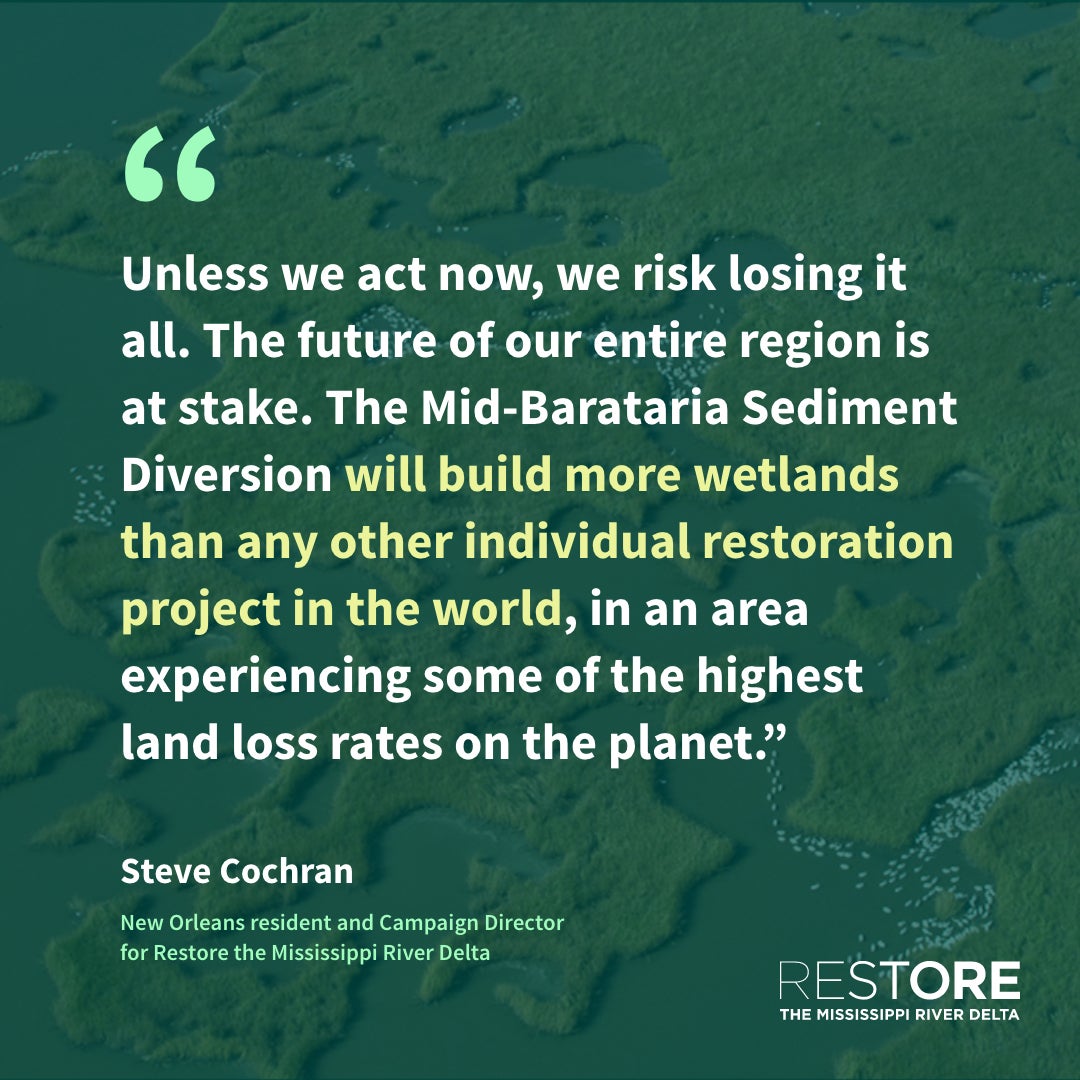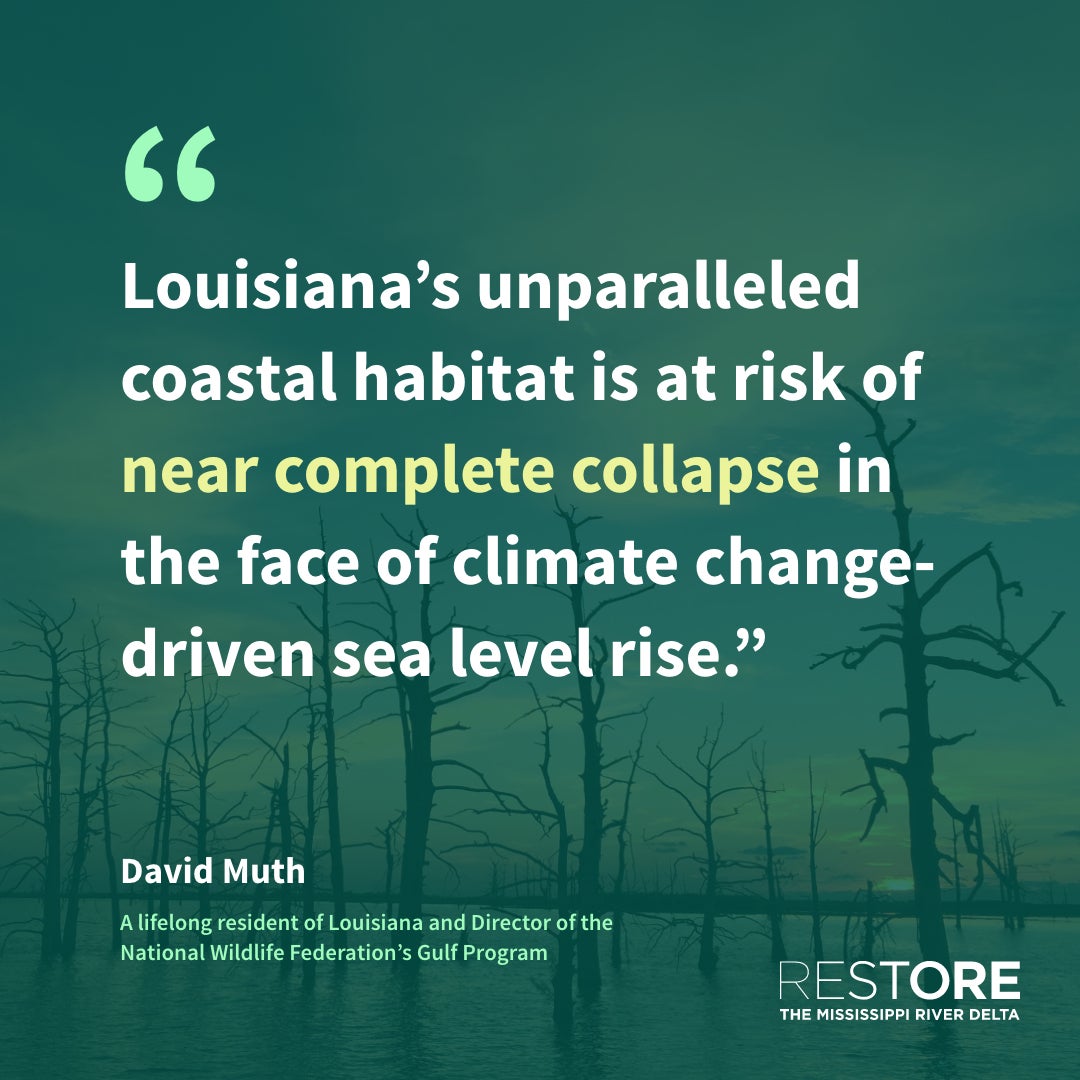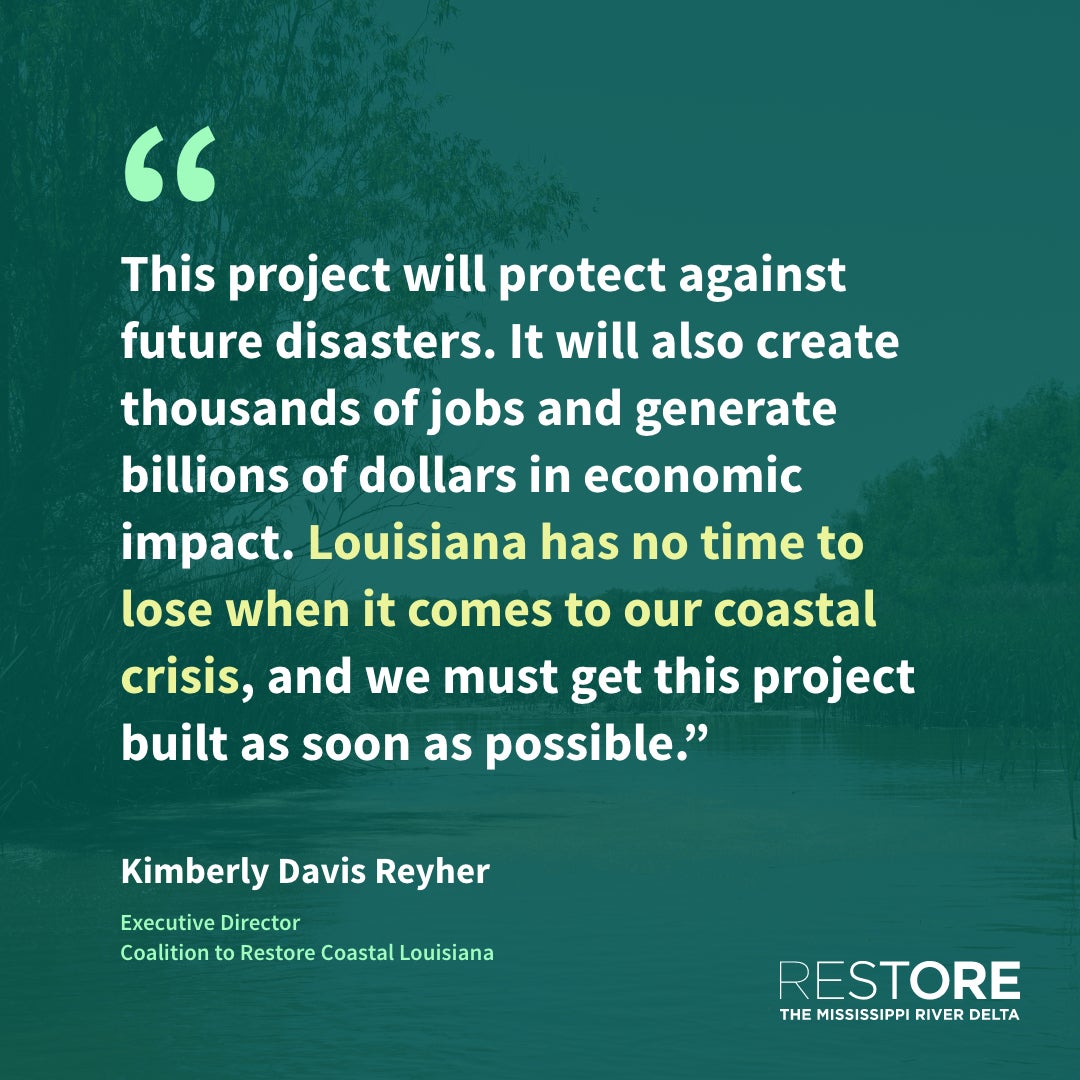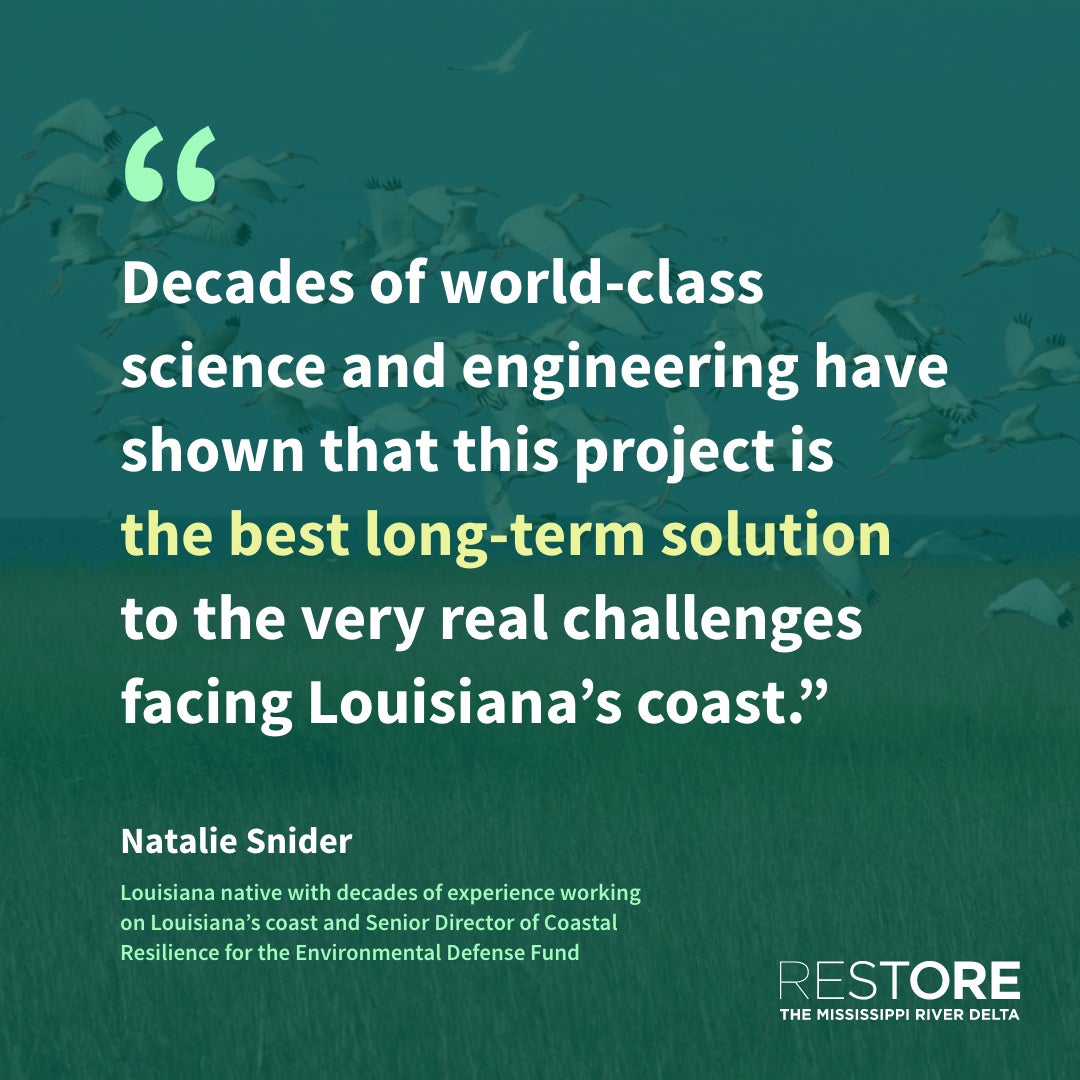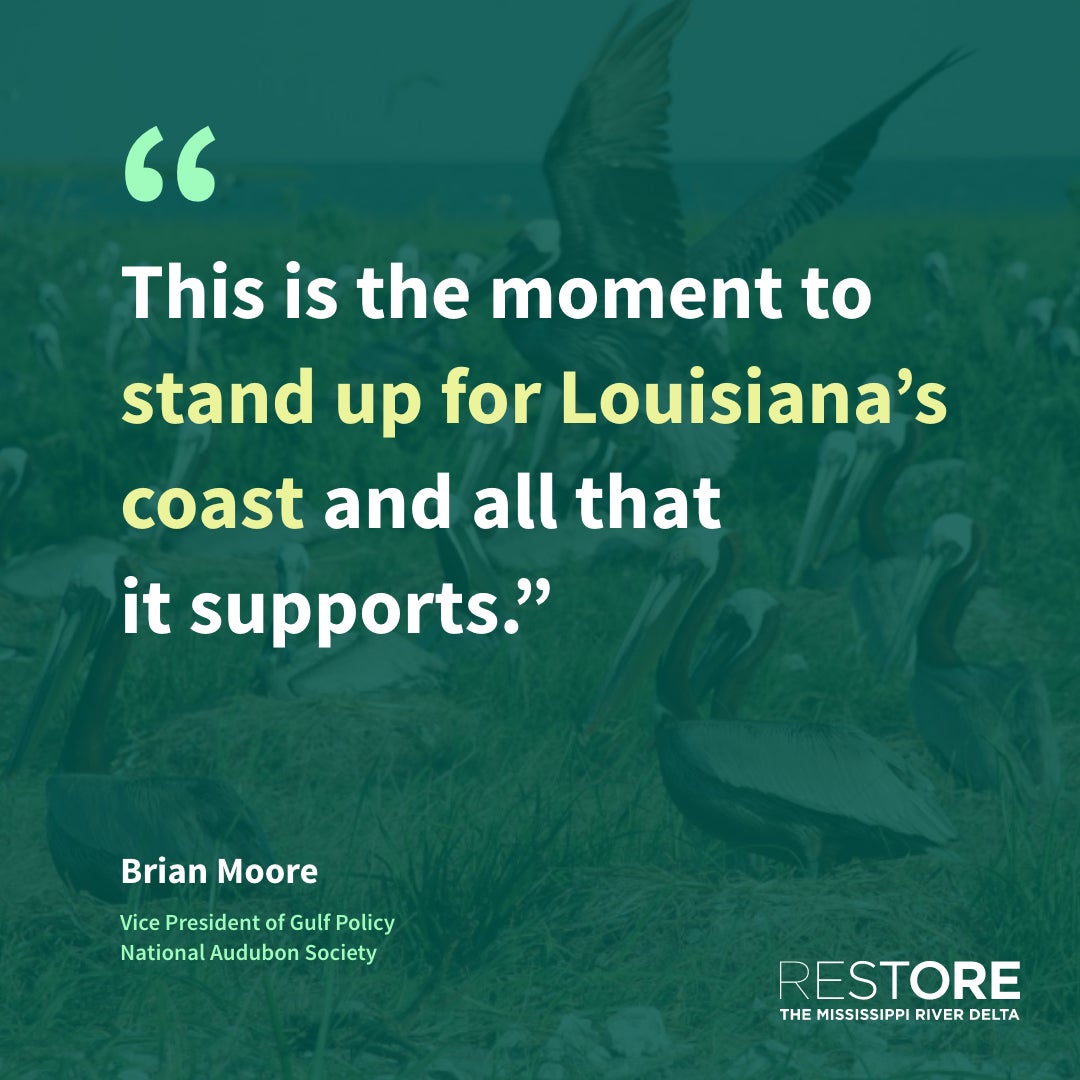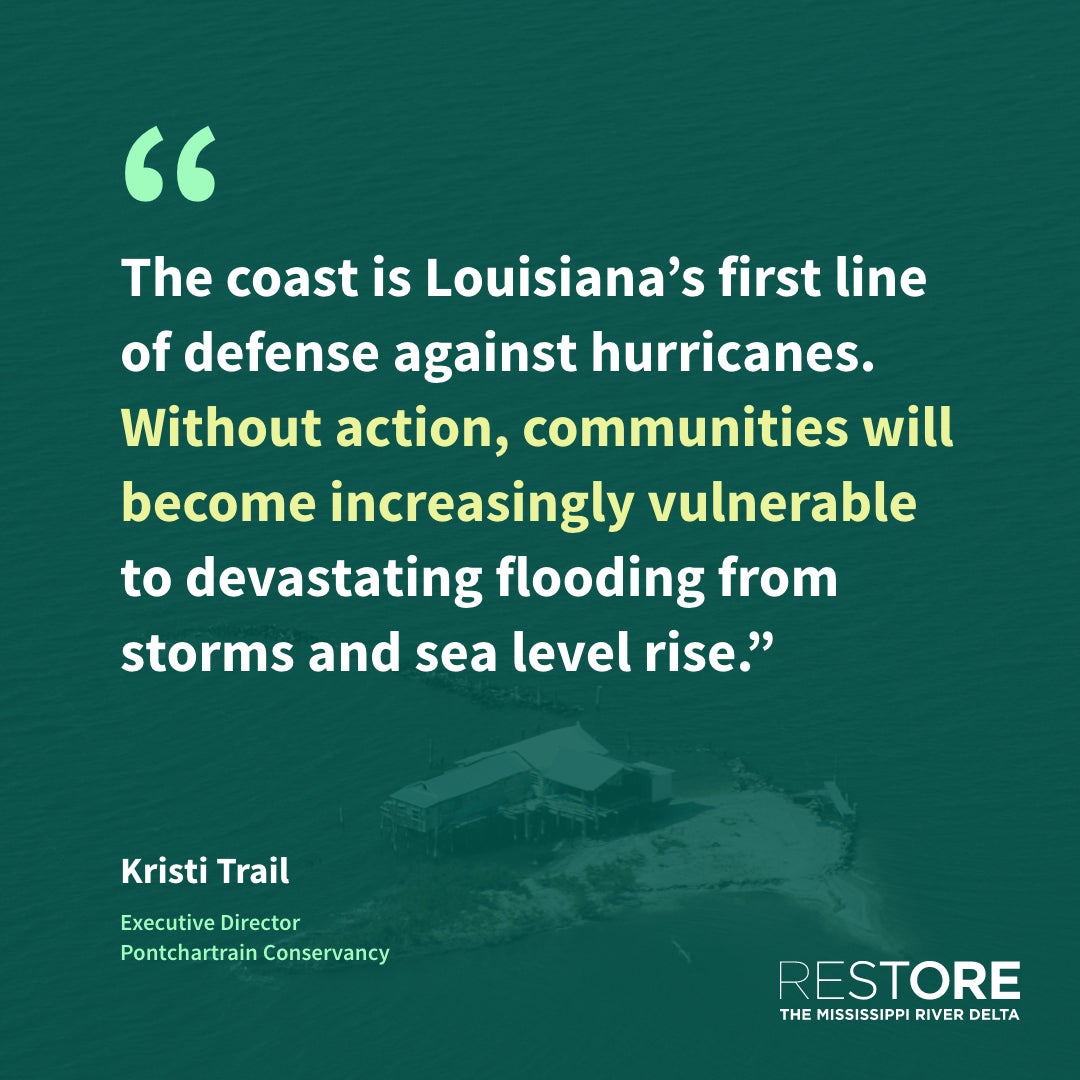“Unless We Act Now, We Risk Losing It All”: Groups Underscore Importance of Mid-Barataria Sediment Diversion
Using the Mississippi River to Restore Rapidly Vanishing Wetlands Vital to Future of Southeast Louisiana
NEW ORLEANS (March 5, 2021) —The single largest ecosystem restoration project in U.S. history reached a significant milestone today when the Army Corps of Engineers (Corps) released the Draft Environmental Impact Statement (DEIS) for the Mid-Barataria Sediment Diversion. This Louisiana Coastal Master Plan project will reconnect the Mississippi River to adjacent wetlands to build and maintain tens of thousands of acres of land in the Barataria Basin, which is experiencing one of the highest rates of land loss on the planet. The release of the DEIS will be followed by a public comment period offering individuals and organizations an opportunity to play an active role in the restoration process.
Restore the Mississippi River Delta, a coalition of conservation, policy and science experts from the Environmental Defense Fund, National Audubon Society, the National Wildlife Federation, the Coalition to Restore Coastal Louisiana and Pontchartrain Conservancy, has long advocated for implementation of the Mid-Barataria Sediment Diversion to protect the people, wildlife and jobs of the entire region.
Learn more about the Mid-Barataria Sediment Diversion |
“Unless we act now, we risk losing it all. The future of our entire region is at stake,” said Steve Cochran, New Orleans resident and campaign director for Restore the Mississippi River Delta, a group of conservation organizations with decades of experience working on the ground in Louisiana to address the state’s land loss crisis. “The Mid-Barataria Sediment Diversion will build more wetlands than any other individual restoration project in the world, in an area experiencing some of the highest land loss rates on the planet. If our region is to have a fighting chance against land loss, hurricanes, and sea level rise, we must put the muddy Mississippi back to work to rebuild our coast.”
“Louisiana’s unparalleled coastal habitat is at risk of near complete collapse in the face of climate change-driven sea level rise,” said David Muth, a lifelong resident of Louisiana and director of the National Wildlife Federation’s Gulf Program. “The Mid-Barataria Sediment Diversion, perhaps more than any other project now planned, is vital to the long-term health of our wildlife and fisheries resources. We are finally beginning to address the serious challenges we face at an appropriate scale, using the right tool–the river. If we act now, we can remain a world-renowned Sportsman’s Paradise.”
“This project will protect against future disasters. It will also create thousands of jobs and generate billions of dollars in economic impact when our state needs these investments desperately,” said Kimberly Davis Reyher, executive director of the Coalition to Restore Coastal Louisiana. “Louisiana has no time to lose when it comes to our coastal crisis, and we must get this project built as soon as possible.”
“Decades of world-class science and engineering have shown that this project is the best long-term solution to the very real challenges facing Louisiana’s coast,” said Natalie Snider, Louisiana native with decades of experience working on Louisiana’s coast and senior director of coastal resilience for the Environmental Defense Fund. “Louisiana has one of the most robust coastal monitoring systems in the world, which will help ensure the project can be adaptively managed to build coastal wetlands and respond to changes over time. With this project and others, Louisiana is leading the world in matching immense coastal challenges with large-scale, innovative solutions.”
“The coast is Louisiana’s first line of defense against hurricanes. Without action, communities will become increasingly vulnerable to devastating flooding from storms and sea level rise,” said Kristi Trail, Executive Director of Pontchartrain Conservancy. “On the heels of the most active hurricane season ever on record with 30 named storms in one season, we must quickly and urgently move forward with projects like the Mid-Barataria Sediment Diversion to rebuild the wetlands and critical line of defense that help protect our region.”
“This is the moment to stand up for Louisiana’s coast and all that it supports,” said Brian Moore, vice president of Gulf policy for the National Audubon Society. “We encourage people to get involved during this public comment period and make their voices heard to protect the Mississippi River Delta, one of the most unique and valuable ecosystems on the planet.”
Background:
Following the public comment period, the Corps will issue a final Environmental Impact Statement and Record of Decision on the project as part of the regulatory process required by the National Environmental Policy Act (NEPA). The Natural Resource Damage Assessment (NRDA) Louisiana Trustee Implementation Group also released a Restoration Plan identifying how the project will help restore the ecosystem in the aftermath of the Deepwater Horizon oil spill.
- To read the Draft Environmental Impact Statement, visit this page.
- To learn more about the Mid-Barataria Sediment Diversion, visit this page.
- To learn more about the NEPA, NRDA and an EIS, visit this resource.
Media Contacts:
- Jacques Hebert, Environmental Defense Fund, 504.250.3699, jhebert@edf.org
- Lauren Bourg, National Audubon Society, 225.776.9838, lauren.bourg@audubon.org
- Emily Guidry Schatzel, National Wildlife Federation, 225.253.9781, schatzele@nwf.org
- James Karst, Coalition to Restore Coastal Louisiana, 504.220.7899, james.karst@crcl.org
- Rachel Strassel, Pontchartrain Conservancy, 504-579-2487, rachel@gambelpr.com
About Restore the Mississippi River Delta:
Restore the Mississippi River Delta is working to protect people, wildlife and jobs by reconnecting the river with its wetlands. As our region faces the crisis of land loss, we offer science-based solutions through a comprehensive approach to restoration. Composed of conservation, policy, science and outreach experts from Environmental Defense Fund, National Audubon Society, the National Wildlife Federation, Coalition to Restore Coastal Louisiana and Pontchartrain Conservancy, we are located in New Orleans and Baton Rouge, Louisiana; Washington, D.C.; and around the United States. Learn more at MississippiRiverDelta.org and connect with us on Facebook and Twitter.

